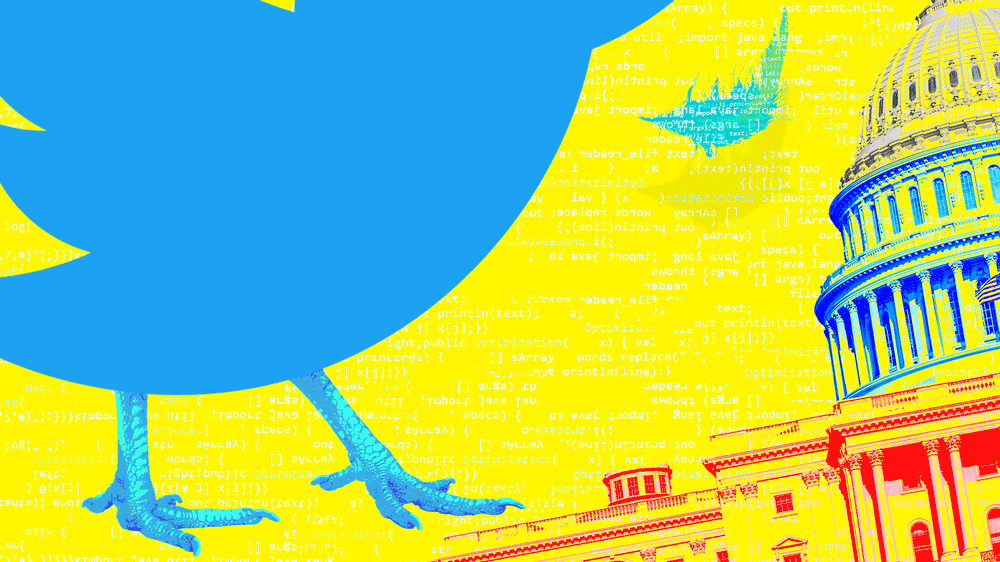When it came time to turn over material critical to the Senate’s Russia investigation, all Twitter initially provided was a batch of tweets that the Kremlin’s English-language news network paid the company to promote, The Daily Beast has learned.
That’s just a sliver of what investigators believe to be Russia’s propaganda campaign on the social network—which helps explain the dissatisfaction that followed those first disclosures.
The already-public tweets, along with a list of 201 suspected Russian-propaganda accounts, represent the sum total of relevant material the social media company has given Senate investigators thus far, according to a source familiar with the investigation.
Twitter turned over the promoted tweets, contained on a thumb drive, late last month. It was the company’s first attempt to explain to Congress how the Kremlin used Twitter to push propaganda.
The thumb drive didn’t contain information on the surreptitious bots and trolls that amplified Russian messaging while masquerading as Americans. Nor did it shed any light on the 201 Twitter accounts suspected to be Kremlin imposters that the company publicly identified in a blog post.
Instead, the thumb drive contained promoted tweets from the Kremlin’s English-language news network, Russia Today (RT).
The drive, according to the source familiar with the disclosure, contained 1,800 tweets that Russia Today paid Twitter $274,000 to promote. Those tweets linked to Russia Today stories, and most of the linked stories didn’t explicitly refer to the 2016 presidential contenders. Of the stories that did, most were critical of Hillary Clinton.
That limits of that disclosure help explain why Sen. Mark Warner—the top Democrat on the Senate’s Russia probe—ripped into Twitter shortly after company representatives met with Senate investigators on Sept. 28.
‘Inadequate on Every Level’
That same day, Twitter published a blog post confirming what social media analysts, intelligence agencies, and even casual users have long known: For years, Twitter has been crucial for disseminating Russian propaganda.
That day, Warner said the material Twitter gave the committee—in other words, the thumb drive—was “inadequate on almost every level.”
Warner added that the company displayed “an enormous lack of understanding of how serious this issue is, the threat it poses to democratic institutions, and begs many more questions than they offered.”
Since then, Twitter has provided the Senate panel with the names of the 201 handles it has identified as suspected Russian accounts. It has not provided additional information about those accounts, and it isn’t clear if investigators will receive that data.
Warner’s office declined to comment for this story.
At a press conference on Oct. 5, Warner hinted that some of his frustration with the company had abated.
“I was concerned at first that some of these social media platform companies did not take this threat seriously enough,” Warner said. “I believe they are recognizing that threat now. They have provided us with information.”
A second person familiar with the probe told The Daily Beast that Twitter staff are still in the process of identifying material that may answer the committee’s questions. That source said the social media company is also working to provide the committee with information about the overall use of Twitter in the weeks leading up to the 2016 election.
And an employee for a major social media company, who requested anonymity to be candid, said it’s likely Twitter will be able to provide more detail to congressional investigators than it has thus far. The source pointed to The Daily Beast’s reporting on one Russian troll account, @Ten_GOP, which the social network permanently shut down in August of this year.
“Anyone with experience with law enforcement investigations would have advised them to preserve that content,” that source said of the account. “I would be surprised if Twitter did not preserve that organic content.”
The microblogging service will soon face even sharper public scrutiny on the Russia question. On Nov. 1, a representative from the company—along with representatives from Google and Facebook—is expected to testify on the issue in back-to-back hearings before the Senate and House intelligence committees.
While Twitter faces especially pointed public scrutiny, Facebook and Google were vastly more important social media platforms for political influence. They are used by orders of magnitude more people that Twitter—billions for each, as opposed to Twitter’s 328 million users worldwide. As a result, Facebook and Google collect vastly more data on their customers than Twitter does, which means they can offer advertisers minutely tailored audiences.
Bots Are ‘Central to Twitter’s Survival’
Mike Hasson, chief strategist of the Republican data analytics firm Red Metrics, told The Daily Beast that all this scrutiny could worry Twitter’s investors—and that may disincentivize the company from being fully forthcoming with Congress about how bots use the platform.
“Twitter is really reluctant to undermine something that is central to their survival, and that is bots,” Hasson said. “It inflates their user count dramatically, which is how they’re valued on Wall Street.”
This isn’t an isolated view. Michael Pachter, a Wedbush Securities analyst, told Quartz last month that the social network’s poor user growth was a prime reason for its sagging share price.
In a blog post published Sept. 28—the day Twitter staff gave the thumb drive to Senate investigators—the company said it doesn’t count bots when it reports its monthly active user (MAU) numbers to investors.
“We have not and do not include spam accounts that we have identified in the active user numbers that we report to shareholders,” the blog post said. “As we have said, we estimate that false or spam accounts represent less than 5% of our MAUs.”







